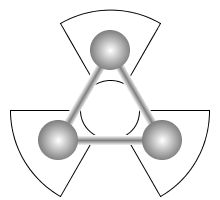 |
Institute for Solid-State Nuclear Physics
Institut für Festkörper-Kernphysik
|
 |
 |
Institute for Solid-State Nuclear Physics
Institut für Festkörper-Kernphysik
|
 |
The Dual Fluid Reactor, DFR, is a novel nuclear reactor concept based on the Generation IV Molten-Salt Reactor (MSR) concept and the liquid-metal cooled reactors (SFR, LFR) with the major improvement that the molten-salt fuel is not used as coolant but the heat is removed in a separate liquid-lead loop.
The DFR has been invented by members of the Institute for Solid State Nuclear Physics (Institut für Festkörper-Kernphysik, IFK) and an associate member. A patent is pending and the IFK is currently seeking public and private funding.
Naturally existing fission materials are completely consumed by the DFR. Assuming a full global supply with respect to the current life standards, natural resources last several million years. For the whole time, the extraction of fissile material can be sufficiently provided by almost every nation, therefore eliminating energy dependencies to a great extent.
The DFR uses all fissionable actinides almost completely, including the transuranium elements from today's interim storage facilities. Moreover, it transmutes fission products, so that the remnants have to be stored only for 300 years.
Due to the high power density and the fact that additional reprocessing and enrichment plants are not required, a commercial DFR can be operated compactly at a fraction of the cost of a common modern pressurized water reactor.
The DFR is inherently safe, thus not needing any active safety systems as opposed to present water moderated reactors. It cannot become supercritical in any operational status or fault.
As a system that is mainly operated automatically and self-contained, the DFR can be monitored and encapsulated against unauthorized access from the outside. Transmuted fissile material will be consumed continuously in the core, hampering any attempt of proliferation.
Due to the high operating temperature the DFR can be constructed without water cooling, thus providing a relatively free choice of the location. In particular it can be operated subterraneously, therefore strongly reducing the danger of natural catastrophes, other accidents (air crashes), or intentional attacks.
The high operating temperature of the DFR allows to run cost-efficient process chemistry, for instance a major industrial production of fuel (also with CO2-free combustion) remarkably less expensive than petroleum-based fuels.
Water can be desalinated on a large scale without affecting the simultaneous electricity production of the DFR plants.